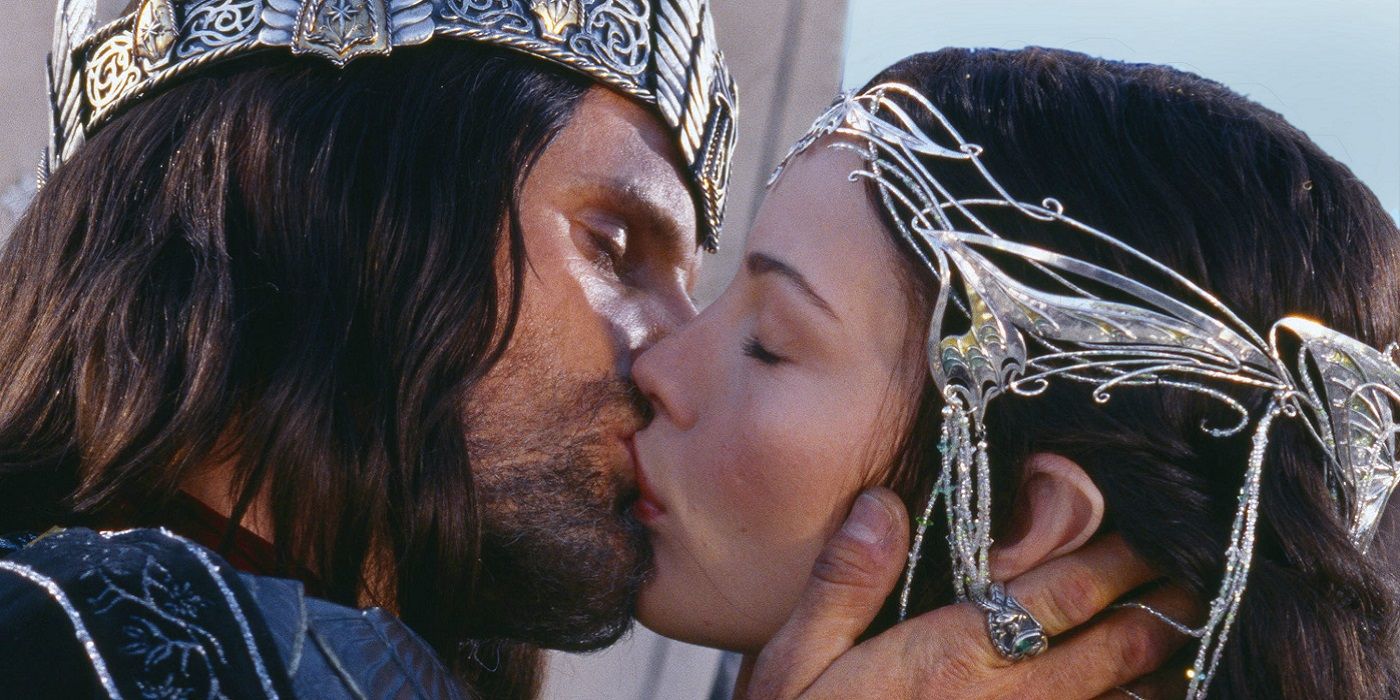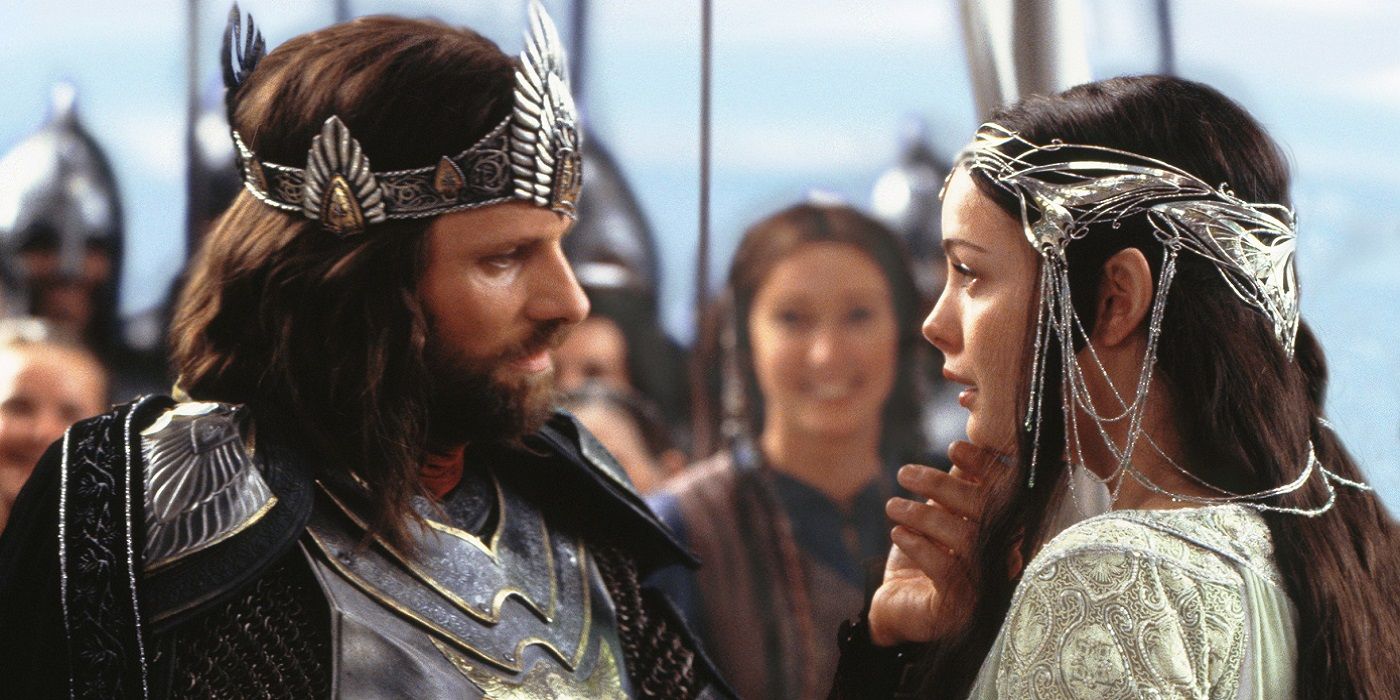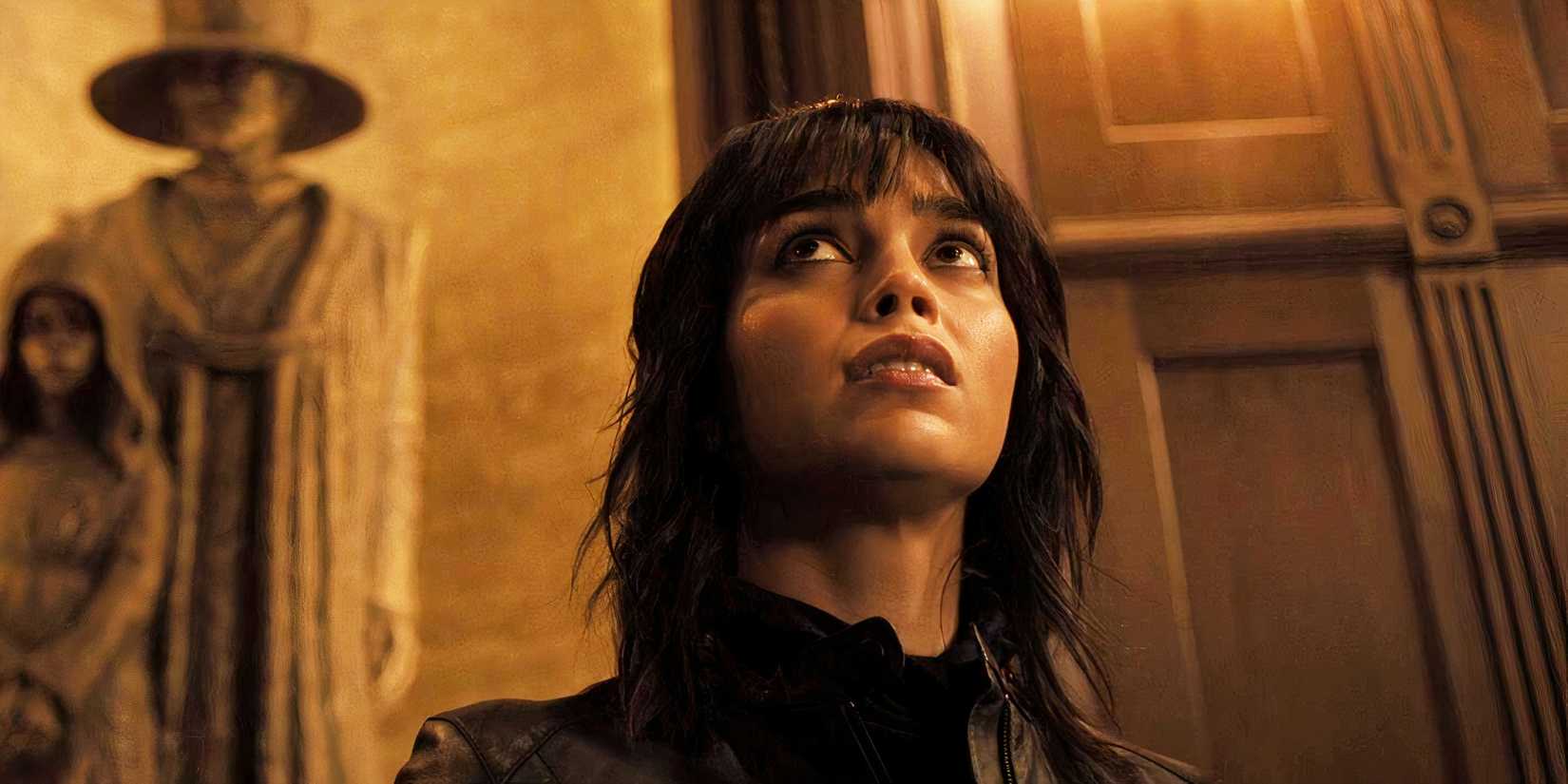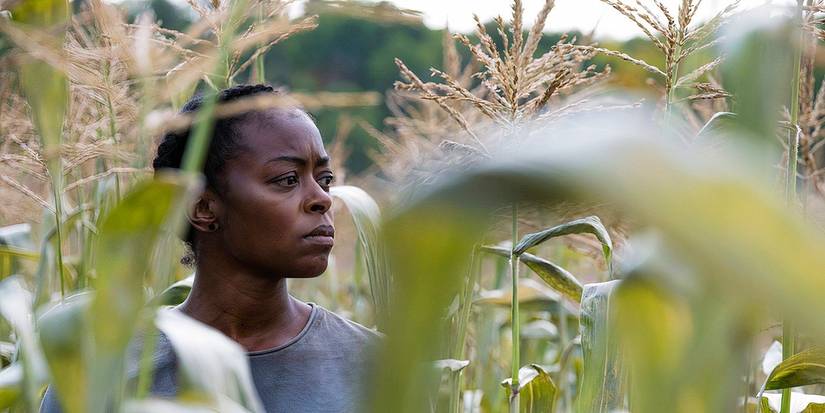The Lord of the Rings is full of fantasy creatures, but its Elves all went west or faced fading in Middle-earth, with Arwen being a notable dweller of Middle-earth even into the Fourth Age. Lord of the Rings’ Elves aren’t bound to the continent of Middle-earth, rather they exist across Middle-earth and its westerly continent, Aman. The chief realm of Aman is Valinor, home of the Valar and the Vanyar Elves. Known as the Undying Lands, Aman was where Elves had to go to resist their fading, which occurred in Middle-earth as the age of Elves ended. Arwen, notably, couldn’t go.
On his deathbed, Aragorn told Arwen that “The… choice [was] before [her]: to repent and… bear away into the West the memory of [their] days together… or… abide the Doom of Men.” That was the body’s death and the soul fleeing from the world of Lord of the Rings to a location unknown even to the Valar, after a brief stopover in the Halls of Mandos. Arwen responded: “Nay… that choice is… over. There is now no ship that would bear me hence, and I must… abide the Doom of Men.” This is because Arwen herself irreversibly chose a human’s fate.
Arwen’s Choosing The Land Of Men Prevented Her From Going To The Undying Lands
Arwen Couldn’t Go To The Land Of The Valar
Arwen was part Elf and part Man, descending from Elrond Peredhel (half-Elven in Sindarin), so she got to choose her fate and chose that of Men. She chose this out of love for Aragorn, not wanting to be separated from him by a different fate. While Men are destined to depart from the Halls of Mandos and leave the world for a location known only to Lord of the Rings’ God, Elves are tied to Arda. If their bodies died, their spirits would go to the Halls of Mandos, and normally be reincarnated eventually.
|
Tolkienian Age |
Event Marking The Start |
Years |
Total Length In Solar Years |
|---|---|---|---|
|
Before time |
Indeterminate |
Indeterminate |
Indeterminate |
|
Days before Days |
Ainur entered Eä |
1 – 3,500 Valian Years |
33,537 |
|
Pre-First Age Years of the Trees (Y.T.) |
Yavanna created the Two Trees |
Y.T. 1 – 1050 |
10,061 |
|
First Age (F.A.) |
Elves awoke in Cuiviénen |
Y.T. 1050 – Y.T. 1500, F.A. 1 – 590 |
4,902 |
|
Second Age (S.A.) |
War of Wrath ended |
S.A. 1 – 3441 |
3,441 |
|
Third Age (T.A.) |
Last Alliance defeated Sauron |
T.A. 1 – 3021 |
3,021 |
|
Fourth Age (Fo.A) |
Elven-rings left Middle-earth |
Fo.A 1 – unknown |
Unknown |
Arwen made “the choice of Lúthien.” In the First Age, a Maia and Elf ruled Doriath and their child, Lúthien, fell in love with the mortal Beren. Lúthien died of grief after Beren’s death. However, she was awarded rebirth as a mortal along with him, in the extenuating circumstances of both of their extraordinary contributions to the wellbeing of the Eruhíni (Children of Ilúvatar), having fought both Sauron and Morgoth. The beauty of Lúthien’s song, telling their story and that of Elves and Men, swayed the Valar into letting her be with Beren. Marrying Aragorn, Arwen made Lúthien’s choice.
Arwen Couldn’t Go To Valinor Even After Aragorn’s Death
Arwen Was Destined To Leave Arda Altogether, Not Move Continent
Arwen’s choice meant that her destiny was to leave Arda altogether after her stay in the Halls of Mandos, not go to Valinor where her fading body could be renewed so she could stay in Arda indefinitely. Arwen’s relationship with Aragorn saw her, essentially, turned from an Elf to a mortal, and henceforth subject to the Doom of Men. While Elvish defining features like her ears, presumably, stayed the same after she bound herself to Aragorn, the essential facet of her Elvish nature — her fate, in accordance with Eru, was irrevocably shifted.
Arwen confirmed her choice in Lord of the Rings’ Appendix A: “I will cleave to you, Dúnadan, and turn from the Twilight. Yet there lies the land of my people and the long home of all my kin.” Mortals were not typically allowed into Valinor. Although exceptions were made for notable individuals like Gimli, Frodo, and Sam, it couldn’t be made for Arwen as she hadn’t earned it like them. Rather, making the choice of Lúthien eradicated her Elvish privilege. She had swapped it for the Gift of Ilúvatar: mortal death. This relieved her of an endless life without Aragorn.
How & When Arwen Died
Arwen’s Death Was Bittersweet
Arwen died after The Lord of the Rings: The Return of the King, with the events of Peter Jackson’s picture not covering far enough into the future to depict her end as it was written by legendary British writer J. R. R. Tolkien. Aragorn died in the year 1541 of the Third Age, which lasted 3021 years. Arwen died in the year 121 of the Fourth Age, according to The Nature of Middle-earth. This means she mourned Aragorn for 1601 years before finally dying of grief. She left her people to die in a deserted Lothlórien.
Ultimately, the differing fates of Elves and Men were the mandate of Eru.
Notably, the immortality of Lord of the Rings’ Elves is not complete, but subject to death by injury, grief, or weariness, and also a fading of the body after so long spent in Middle-earth. Elves believed that this fading was “derived from the debility introduced by Melkor into the substance of Arda upon which [the body] must feed” (Morgoth’s Ring). Morgoth’s discord in the Ainulindalë resulted in Arda Marred. But Morgoth, who was then known as Melkor, introduced his discord before Eru finalized the Ainulindalë. Ultimately, the differing fates of Elves and Men were the mandate of Eru.
The story of Lúthien’s choice to remain mortal, which preceded Arwen’s, can be further read about in The Silmarillion.
So, Arwen’s fate isn’t as tragic as it may seem. While Arda Marred represents one of Morgoth’s worst crimes in Lord of the Rings, Morgoth was nothing “but [Eru’s] instrument in the devising of things more wonderful” than Morgoth could have ever imagined in his rebellion, and nothing could truly “alter the music in [Eru’s] despite.” Arda, in all its marring, was part of a perfect reality. Arwen’s all-consuming grief after Aragorn’s death inevitably hurt her, but the mercy and flexibility of the system gave her the chance to see him after death in The Lord of the Rings.







